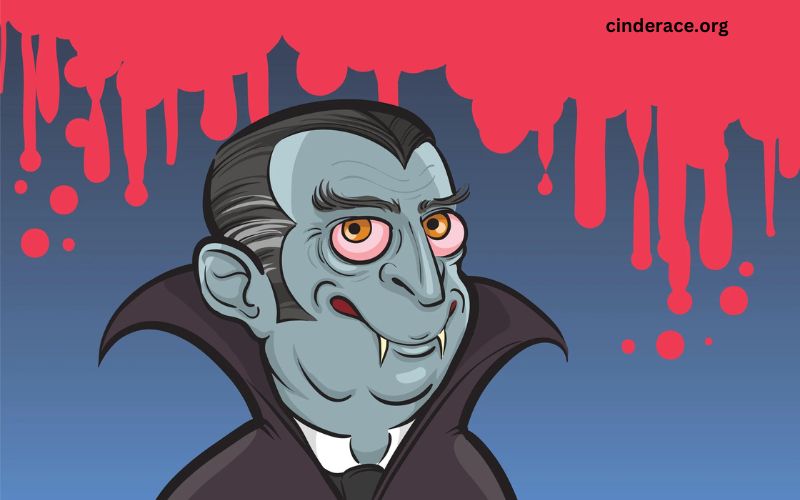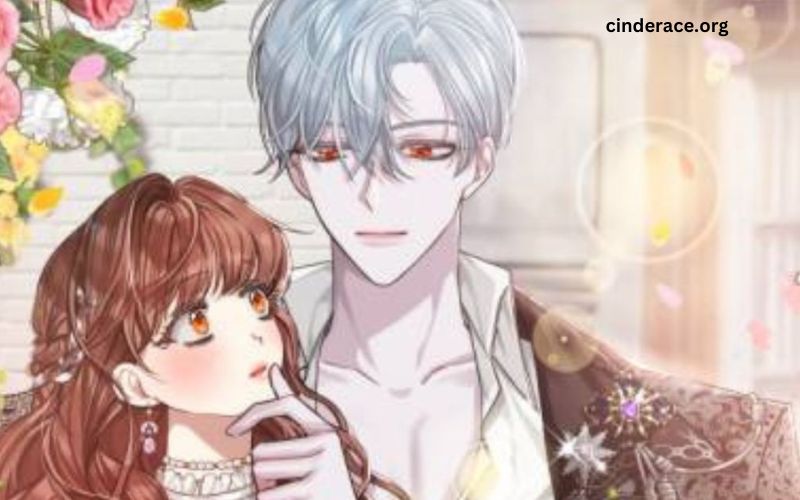For centuries, the legend of Lilith has captivated the imagination of artists, writers, and mystics alike. This enigmatic figure, often depicted as a seductive and sinister vampire queen, has an eternal allure that refuses to fade. With her mysterious origins and mythological complexities, Lilith has become a cultural icon, symbolizing the power of the feminine and the darkness that lies within. From the ancient Mesopotamian tales of her rebellion against Adam to the modern-day depictions of her as a bloodthirsty seductress, Lilith’s mystique has only grown stronger with time. In this post, we’ll delve into the fascinating world of Lilith, exploring the many faces of this vampire queen and the enduring allure that has made her a timeless and captivating figure in popular culture.
Introduction to Lilith, the Original Vampire Queen
In the realm of mythology, there exists a figure shrouded in mystery, her essence a masterful blend of seduction and malevolence. Her name is Lilith, the original vampire queen, and her allure has captivated the imagination of mortals for centuries. Born from the earth, Lilith’s story is a testament to the power of the feminine, a dark and fascinating tale of rebellion, passion, and the eternal quest for immortality.
From the ancient Sumerian texts to modern-day pop culture, Lilith’s legend has evolved, yet her essence remains unchanged. She is the embodiment of the forbidden, a being of unbridled passion and desire, who defied the conventions of society and convention. Her story is one of empowerment, of a woman who refused to be silenced, who refused to be conquered.
In this realm of darkness and shadow, Lilith reigns supreme, her beauty and allure a siren’s call to those who dare to venture into the unknown. Her mystique is a potent blend of fear and fascination, a reminder that the line between good and evil is often blurred, and that the darkness that lies within us all can be both terrifying and alluring.
As we delve into the depths of Lilith’s mythology, we will uncover the secrets of her eternal allure, and explore the mysteries that have captivated the imagination of mortals for centuries. Join us on this journey into the heart of darkness, as we uncover the mystique of the vampire queen, Lilith.
The Origins of Lilith: Mythology and Folklore
As the darkness descends and the shadows come alive, a whispered legend begins to take shape. The tale of Lilith, the mysterious and enigmatic Vampire Queen, has captivated the imagination of many for centuries. But what lies at the heart of this eternal allure? To understand the mystique of Lilith, we must delve into the rich tapestry of mythology and folklore that has shaped her legend.
According to ancient Mesopotamian mythology, Lilith was the first wife of Adam, created from the same earth as her husband. However, their union was not to be, as Lilith’s fiery independence and unyielding spirit clashed with Adam’s patriarchal dominance. As the story goes, Lilith refused to submit to Adam’s rule, and in a fit of rage, she was cast out of the Garden of Eden, leaving Adam to pine for her return.
As the centuries passed, the legend of Lilith evolved, and she became synonymous with the mysterious and the unknown. In Jewish folklore, she was depicted as a seductress, a witch, and a shapeshifter, feared and revered by all who knew her name. In European folklore, she was said to be a vampire, a creature of the night, with a taste for human blood and a penchant for darkness and despair.
Despite the many variations and interpretations of her story, one thing remains constant: Lilith’s eternal allure is rooted in her unyielding spirit, her defiance of the status quo, and her unrelenting passion for life. She is a symbol of the power of the feminine, a testament to the human desire for freedom and autonomy, and a reminder that even in the darkest of times, there is always a spark of light to be found.
As we embark on this journey to uncover the mystique of Lilith, we will explore the many facets of her legend, from her origins in mythology to her modern-day interpretations. We will delve into the symbolism and significance of her story, and uncover the secrets that have made her an eternal and alluring figure in the world of vampire lore.
The First Wife of Adam: A Biblical Perspective
In the ancient texts of the Hebrew Bible, Lilith’s first appearance is as the first wife of Adam, created alongside him from the earth. According to the book of Genesis, God formed Adam from the dust of the ground and breathed life into him. However, as Adam slept, God created a companion for him, a woman made from Adam’s rib. This first woman, Lilith, was not pleased with her subservient role and refused to return to the womb of Adam, instead choosing to leave the Garden of Eden and make her own way in the world.
This biblical account of Lilith’s origins has led to a rich and complex mythology surrounding her character. Some interpretations view her as a symbol of feminine power and independence, while others see her as a symbol of seduction and temptation. Regardless of the interpretation, the idea of Lilith as the first wife of Adam has cemented her place in the collective unconscious, making her a fascinating and enigmatic figure that continues to captivate the imagination of people to this day.
The story of Lilith and Adam has also been interpreted as a cautionary tale about the dangers of disobeying God’s will. In this sense, Lilith’s rebellion against her subservient role is seen as a symbol of the consequences of defying authority. This narrative has been used to justify the patriarchal dominance of women and has contributed to the perpetuation of gender inequality throughout history.
Despite the negative connotations, the myth of Lilith has also been used as a symbol of empowerment and resistance. In some interpretations, Lilith is seen as a strong and independent woman who refuses to be bound by societal norms and expectations. This feminist reinterpretation of Lilith’s story has inspired many women throughout history to challenge the status quo and demand equal rights and opportunities.
In conclusion, the biblical account of Lilith as the first wife of Adam has had a profound impact on the mythology surrounding her character. From being seen as a symbol of feminine power and independence to being viewed as a symbol of seduction and temptation, Lilith’s story continues to captivate and inspire people to this day. Whether seen as a cautionary tale or a symbol of empowerment, the myth of Lilith remains a powerful and enduring part of our collective imagination.
The Symbolism of Lilith: Feminine Power and Rebellion
As the embodiment of feminine power and rebellion, Lilith’s symbolism is woven into the very fabric of her mythology. She is the antithesis of the traditional feminine ideal, defying the societal norms that sought to constrain and control women. Her defiance of Adam, refusing to submit to his dominance, is a powerful allegory for the struggle for women’s rights and autonomy. The image of Lilith, a seductress and a destroyer, is a testament to the enduring power of the feminine force.
In many cultures, Lilith is associated with the mysteries of the feminine, including childbirth, menstruation, and the cycles of the moon. She is often depicted as a powerful and alluring figure, with a deep connection to the natural world and the cycles of life and death. Her symbol, the serpent, represents the feminine principle of receptivity, fertility, and transformation.
Lilith’s association with the feminine and the natural world is a powerful counterbalance to the dominant patriarchal culture, which has historically sought to suppress and control women’s bodies and desires. Her mythological significance is a testament to the enduring power of the feminine, and her allure is a reminder that women’s power and autonomy are essential to creating a more just and equitable world.
The Evolution of Lilith: From Demon to Vampire
As the centuries passed, the legend of Lilith evolved, much like the myths and fairy tales that surrounded her. From a troublesome, demon-like figure in Jewish mythology, she transformed into a seductive, bloodthirsty vampire queen in the realm of Western folklore. This metamorphosis was not a sudden or drastic change, but rather a gradual one, shaped by the cultural and societal influences of the time. The romanticized notion of vampires, popularized by authors such as Bram Stoker and Anne Rice, laid the groundwork for Lilith’s vampiric persona. Her transformation was further solidified by the rise of Gothic literature, which often featured dark, mysterious, and alluring female characters.
In this new form, Lilith’s mystique was heightened, as her powers and abilities became more refined and complex. Her association with the night, the moon, and the shadows only added to her allure, as she became a symbol of the unknown and the forbidden. The image of Lilith, the vampire queen, captivated the imagination of artists, writers, and musicians, inspiring a wide range of creative works. From the eerie, atmospheric landscapes of the Gothic art movement to the haunting melodies of darkwave music, Lilith’s influence was palpable, as she continued to weave her spell on the collective imagination.
The Intersection of Lilith and Dracula: A Literary Analysis
As the ages pass, the fascination with the dark and mysterious only intensifies, and it is here that the figure of Lilith, the vampire queen, intersects with the most iconic of vampire stories, Bram Stoker’s Dracula. Like two celestial bodies orbiting in the same gravitational pull, the mythological and literary confluences of Lilith and Dracula give rise to a mesmerizing dance of symbolism and metaphor. The eternal allure of Lilith is amplified by her entwining with the Prince of Darkness, as if the very fabric of their opposing natures were destined to collide.
The literary analysis of this intersection reveals a rich tapestry of themes, where the dichotomy of good and evil is subverted, and the boundaries of morality are blurred. The vampire, an embodiment of the monstrous “other,” is drawn to the powerful and seductive Lilith, an enigmatic figure shrouded in mystery and darkness. The union of these two archetypes sparks a profound exploration of the human psyche, delving into the deepest recesses of our collective unconscious. As the shadows of Lilith and Dracula converge, the reader is transported to a realm where the boundaries of reality are stretched, and the mysteries of the human condition are laid bare.
The Vampire Lilith in Popular Culture: A Review of Film and Literature
As the centuries have passed, the enigmatic figure of Lilith has continued to captivate the imagination of creatives, inspiring a plethora of interpretations and reinterpretations in popular culture. In the realm of film and literature, Lilith has emerged as a complex and multifaceted character, embodying both the dark and seductive qualities of the vampire, as well as the mysterious and alluring aspects of the mythical queen.
From the iconic Hammer horror films of the 1960s, to modern-day literary adaptations, Lilith’s vampiric persona has been reimagined and reinterpreted in a myriad of ways. In works such as Anne Rice’s “The Vampire Lestat” and “Interview with the Vampire”, Lilith is portrayed as a powerful and seductive figure, embodying the dark allure of the vampire. In contrast, authors such as Stephen King and Clive Barker have chosen to focus on the more sinister and malevolent aspects of Lilith’s character, depicting her as a malevolent force that inspires terror and dread.
In film, Lilith has been brought to life by a range of talented actresses, including the iconic Christopher Lee in “The Devil Rides Out”, and more recently, the talented Naomi Watts in “King Kong”. These portrayals have not only cemented Lilith’s status as a cultural icon, but have also served to further cement the mystique and allure of the vampire queen.
Throughout this section, we will delve into the various interpretations of Lilith in popular culture, exploring the ways in which she has been reimagined and reinterpreted over the centuries. From the dark and seductive, to the malevolent and terrifying, we will examine the many facets of Lilith’s character, and the enduring appeal of the vampire queen.
The Masculine Response to Lilith: Fear and Obsession
As the embodiment of the feminine dark, Lilith’s very presence seems to stir a primal response within the male psyche. Like a siren’s call, her seductive allure beckons, drawing men into the depths of her mysterious and feared realm. The masculine response to Lilith is a complex tapestry of emotions, woven from threads of both fear and obsession.
At its core, this response is rooted in the unconscious, where the male psyche struggles to reconcile the feminine and the masculine. Lilith, as the embodiment of the feminine dark, represents the unknown, the uncontrollable, and the forbidden. Her presence awakens ancient fears and insecurities, tapping into the deep-seated anxieties that men have about losing control, being overpowered, and being consumed by the very forces they cannot fully understand.
Yet, despite this fear, there is an undeniable allure to Lilith’s mystique. Her enigmatic presence seems to draw men in, like moths to a flame, as they are drawn into the vortex of her dark and mysterious allure. This obsession is a manifestation of the male psyche’s desire to dominate, to conquer, and to possess the unattainable. Lilith, as the ultimate symbol of the feminine, represents the ultimate challenge, the ultimate prize, and the ultimate mystery.
In this way, the masculine response to Lilith is a dialectical dance between fear and obsession, as men are drawn into the labyrinth of her mystique, and their own desires and insecurities are reflected back at them. It is a journey that is both terrifying and alluring, a journey that has captivated the imagination of men for centuries, and continues to do so to this day.
The Feminine Response to Lilith: Empowerment and Identification
As the ancient myth of Lilith continues to captivate and intrigue, a peculiar phenomenon has emerged – a profound connection between the vampire queen and the feminine psyche. For many women, Lilith’s enigmatic presence has become a symbol of empowerment, a beacon of liberation from the constraints of societal norms. Her rebellious spirit, independence, and unapologetic nature have resonated deeply with the feminine experience, striking a chord that echoes through the ages.
In an era where women’s voices are finally being heard, Lilith’s defiant cry of “I am a woman, hear me roar!” has become a rallying cry for those seeking to break free from the shackles of patriarchy. Her association with the dark, the mysterious, and the unknown has also sparked a fascination with the feminine mysteries, as women seek to tap into their own inner power and strength. The mythology surrounding Lilith has become a metaphor for the feminine journey, a reminder that women are not just passive recipients of patriarchal dominance, but active agents of change, capable of rewriting their own narratives.
As women increasingly identify with Lilith’s unapologetic nature, they are drawn to her as a symbol of unbridled passion, creativity, and unrelenting energy. The vampire queen’s allure lies not only in her mystique but also in her ability to inspire women to reclaim their own agency, to embrace their sexuality, and to assert their presence in a world that has often sought to silence them. In this sense, Lilith’s eternal allure is not just a fascination with the unknown but a testament to the enduring power of the feminine spirit.
The Enduring Enigma of Lilith: Why She Remains a Cultural Icon
The eternal allure of Lilith is a siren’s call that has captivated the imagination of humanity for centuries. Like a whispered secret, her mystique has been passed down through the ages, shrouding her in an aura of enigma. Despite the many interpretations and reimaginings of her character, Lilith remains an enduring cultural icon, a testament to the power of the human psyche to create and recreate myths that speak to our deepest desires and fears.
Her status as a vampire queen, a figure of dark beauty and seductive power, has only added to her allure. In the modern era, Lilith has been reimagined in countless forms of media, from literature and film to music and art. And yet, despite the many iterations, her essence remains unchanged. She is a symbol of the unknown, a representation of the dark and primal forces that lie beyond the boundaries of human understanding.
But why, you might ask, does Lilith remain so captivating? What is it about this ancient figure that continues to fascinate us? The answer lies in her ability to tap into our deepest fears and desires, to embody the contradictions and paradoxes that lie at the heart of human nature. She is a reflection of our own darker impulses, a reminder that we are all capable of both good and evil, and that the line between the two is often blurred.
In this sense, Lilith is more than just a myth or a figure of fiction. She is a representation of our own collective unconscious, a symbol of the primal forces that shape our desires and our fears. And it is this enduring enigma, this mystery that lies at the heart of Lilith’s allure, that continues to captivate us, drawing us in with her dark and seductive beauty.
The Psychology of Lilith: A Study of Her Appeal
The allure of Lilith is as complex and multifaceted as the human psyche itself. As we delve into the psychology of her appeal, it becomes clear that her mystique is rooted in a deep-seated desire for power, rebellion, and freedom. In an era where women were often relegated to secondary roles, Lilith’s defiant spirit and unwavering independence struck a chord with those who felt constrained by societal norms. Her ability to transcend the boundaries of good and evil, embodying both the seductive and the terrifying, has captivated imaginations and inspired a sense of identification in those who feel like outsiders.
Lilith’s appeal also lies in her rejection of traditional feminine norms, challenging the notion that women must be submissive, nurturing, and passive. Her vampiric nature, with its associations with bloodlust and the supernatural, serves as a metaphor for the primal, untamed forces that lie within each of us, yearning to be unleashed. This dichotomy of characteristics – both beautiful and monstrous, nurturing and destructive – has made her a timeless figure of fascination, embodying the contradictions and paradoxes that exist within the human experience.
Furthermore, Lilith’s enigmatic nature has given rise to a multitude of interpretations and mythologies, allowing her to evolve and adapt to the cultural and historical context in which she is perceived. Her enduring presence in the collective unconscious has made her a symbol of the feminine, a reflection of the complexities and mysteries of the female psyche, and a testament to the power of the human imagination to shape and reshape our understanding of the world.
The Role of Lilith in Modern Feminism and Feminist Theory
As the ages have passed, the enigmatic figure of Lilith has continued to captivate the imagination of scholars and laypeople alike. Beyond her origins as a Mesopotamian demon and her association with the ancient world of myth and magic, Lilith has evolved into a potent symbol of feminist resistance and empowerment in modern times. In the realm of feminist theory, Lilith has emerged as a powerful archetype, embodying the marginalized and oppressed female experience. Her defiance of male dominance and her rejection of patriarchal norms have made her a beacon of hope for women seeking to reclaim their agency and challenge the status quo.
In the 20th century, feminist scholars and writers such as Naomi Goldenberg and Barbara G. Walker recontextualized Lilith as a proto-feminist figure, highlighting her capacity to challenge the patriarchal system and assert her autonomy. This reinterpretation has been influential in shaping the narrative of feminist thought, as Lilith’s story has become a metaphor for the struggles and triumphs of women throughout history. Today, Lilith’s mystique continues to inspire and motivate women, serving as a reminder of the enduring power of female resistance and the importance of reclaiming our own narratives and destinies.
The Legacy of Lilith: A Symbol of Rebellion and Individuality
As the centuries have passed, Lilith’s legend has only grown, her mystique evolving into a symbol of rebellion and individuality that continues to captivate the imagination of people around the world. In an era where conformity and tradition are often valued above all else, Lilith’s story serves as a powerful reminder of the importance of embracing our unique selves and refusing to conform to societal norms. Her defiance of Adam’s dominance and her refusal to submit to the constraints of traditional feminine roles has made her a beacon of inspiration for those who dare to be different.
From the punk rockers of the 1970s and 1980s, who saw Lilith as a symbol of their own rebellious spirit, to the modern-day pagans and witches who revere her as a goddess of feminine power, Lilith’s legacy has been a source of inspiration and empowerment for countless individuals. Her story has been woven into the fabric of popular culture, appearing in everything from literature and music to film and television.
Today, Lilith’s allure remains as strong as ever, a testament to the enduring power of her mythology. She continues to fascinate and inspire, a reminder that even in the darkest of times, there is always the possibility of transformation and transcendence. As a symbol of rebellion and individuality, Lilith’s legacy is a powerful reminder of the importance of embracing our true selves and refusing to be silenced or constrained by the expectations of others.
The Future of Lilith: A Reflection on Her Cultural Significance
As the centuries pass, the allure of Lilith continues to captivate and intrigue us, her mystique only growing more potent with time. Like a vampire’s kiss, her presence haunts the fringes of our collective consciousness, beckoning us to explore the darker recesses of the human psyche. And yet, despite the whispers of her eternal existence, Lilith remains an enigma, a cipher waiting to be deciphered. In this era of modernity, where the boundaries between reality and fantasy are increasingly blurred, Lilith’s legend serves as a poignant reminder of our enduring fascination with the mysterious and the unknown.
In this, her future is as uncertain as it is alluring. Will she continue to lurk in the shadows, a dark seductress manipulating the threads of fate? Or will she emerge from the shadows, a powerful force for good, using her ancient wisdom to guide humanity towards a brighter future? The answer, much like Lilith herself, remains shrouded in mystery, leaving us to ponder the eternal allure of the vampire queen.
Conclusion
As the curtain closes on our journey through the enigmatic realm of Lilith, it becomes clear that the eternal allure of this mythological figure lies not in her dark and mysterious powers, but in the complex and multifaceted nature of her character. Like a siren’s call, Lilith’s mystique beckons us to delve deeper into the shadows of human psyche, to confront the fears and desires that lurk within. Her enduring presence in the collective imagination is a testament to the power of myth to shape our understanding of ourselves and the world around us.
As we bid farewell to the Vampire Queen, we are left to ponder the timeless themes that she embodies: the struggle between light and darkness, the allure of the unknown, and the eternal cycle of life and death. Lilith’s mystique reminds us that even in the darkest of times, there is always a spark of light that can guide us through the shadows. And as we continue to navigate the complexities of human existence, it is this spark that will continue to draw us to the eternal allure of Lilith, the Vampire Queen.













